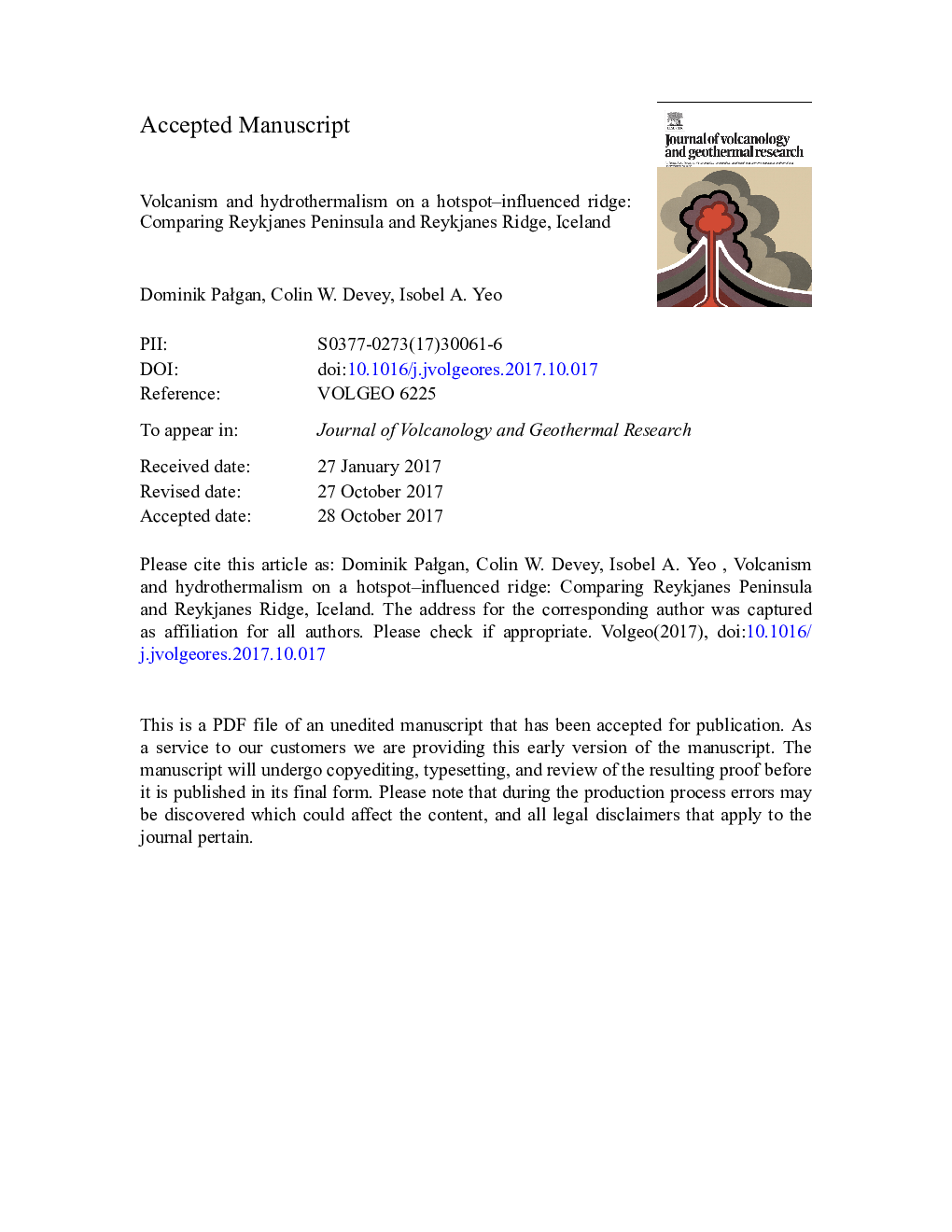| کد مقاله | کد نشریه | سال انتشار | مقاله انگلیسی | نسخه تمام متن |
|---|---|---|---|---|
| 8911446 | 1638275 | 2017 | 54 صفحه PDF | دانلود رایگان |
عنوان انگلیسی مقاله ISI
Volcanism and hydrothermalism on a hotspot-influenced ridge: Comparing Reykjanes Peninsula and Reykjanes Ridge, Iceland
ترجمه فارسی عنوان
آتشفشان و هیدروترمال بر روی ریدینگ تحت تأثیر کانال: مقایسه شبه جزیره ریک جینه و ریکجنس ریج، ایسلند
دانلود مقاله + سفارش ترجمه
دانلود مقاله ISI انگلیسی
رایگان برای ایرانیان
کلمات کلیدی
موضوعات مرتبط
مهندسی و علوم پایه
علوم زمین و سیارات
ژئوشیمی و پترولوژی
چکیده انگلیسی
Current estimates indicate that the number of high-temperature vents (one of the primary pathways for the heat extraction from the Earth's mantle) - at least 1 per 100 km of axial length - scales with spreading rate and should scale with crustal thickness. But up to present, shallow ridge axes underlain by thick crust show anomalously low incidences of high-temperature activity. Here we compare the Reykjanes Ridge, an abnormally shallow ridge with thick crust and only one high-temperature vent known over 900 km axial length, to the adjacent subaerial Reykjanes Peninsula (RP), which is characterized by high-temperature geothermal sites confined to four volcanic systems transected by fissure swarms with young (Holocene) volcanic activity, multiple faults, cracks and fissures, and continuous seismic activity. New high-resolution bathymetry (gridded at 60 m) of the Reykjanes Ridge between 62°30â²N and 63°30â²N shows seven Axial Volcanic Ridges (AVR) that, based on their morphology, geometry and tectonic regime, are analogues for the volcanic systems and fissure swarms on land. We investigate in detail the volcano-tectonic features of all mapped AVRs and show that they do not fit with the previously suggested 4-stage evolution model for AVR construction. Instead, we suggest that AVR morphology reflects the robust or weak melt supply to the system and two (or more) eruption mechanisms may co-exist on one AVR (in contrast to 4-stage evolution model). Our interpretations indicate that, unlike on the Reykjanes Peninsula, faults on and around AVRs do not cluster in orientation domains but all are subparallel to the overall strike of AVRs (orthogonal to spreading direction). High abundance of seamounts shows that the region centered at 62°47â²N and 25°04â²W (between AVR-5 and -6) is volcanically robust while the highest fault density implies that AVR-1 and southern part of AVR-6 rather undergo period of melt starvation. Based on our observations and interpretations we expect all of the AVRs on Reykjanes Ridge to be hydrothermally active but morphological and hydrographic settings of this ridge may cause hydrothermal plumes to be quickly dispersed and diluted due to exposure to strong bottom currents. Therefore, combined CTD and autonomous vehicles surveys are probably the most efficient methods for hydrothermal exploration along the Reykjanes Ridge.
ناشر
Database: Elsevier - ScienceDirect (ساینس دایرکت)
Journal: Journal of Volcanology and Geothermal Research - Volume 348, 15 December 2017, Pages 62-81
Journal: Journal of Volcanology and Geothermal Research - Volume 348, 15 December 2017, Pages 62-81
نویسندگان
Dominik PaÅgan, Colin W. Devey, Isobel A. Yeo,
